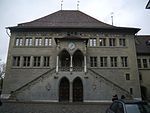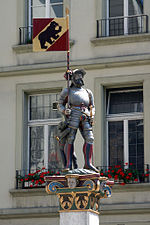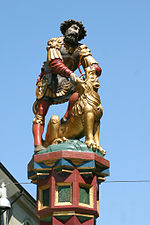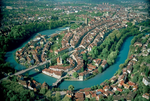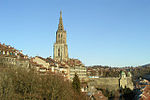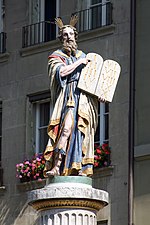Church of St. Peter and Paul, Bern
19th-century churches in SwitzerlandCathedrals in SwitzerlandChurches in the canton of BernCultural property of national significance in the canton of BernFormer Roman Catholic church buildings ... and 4 more
Gothic Revival church buildings in SwitzerlandOld Catholic church buildingsOld Catholicism in SwitzerlandOld City (Bern)

The Church of St. Peter and Paul is a Christian Catholic church in Bern, Switzerland. It is designated as a Cultural Property of National Significance
Excerpt from the Wikipedia article Church of St. Peter and Paul, Bern (License: CC BY-SA 3.0, Authors, Images).Church of St. Peter and Paul, Bern
Rathausgasse, Bern
Geographical coordinates (GPS) Address Website External links Nearby Places Show on map
Geographical coordinates (GPS)
| Latitude | Longitude |
|---|---|
| N 46.948716666667 ° | E 7.4515416666667 ° |
Address
Kirche St. Peter und Paul (Sankt-Peter- und Paul-Kirche)
Rathausgasse
3011 Bern (Stadtteil I)
Bern, Switzerland
Open on Google Maps

